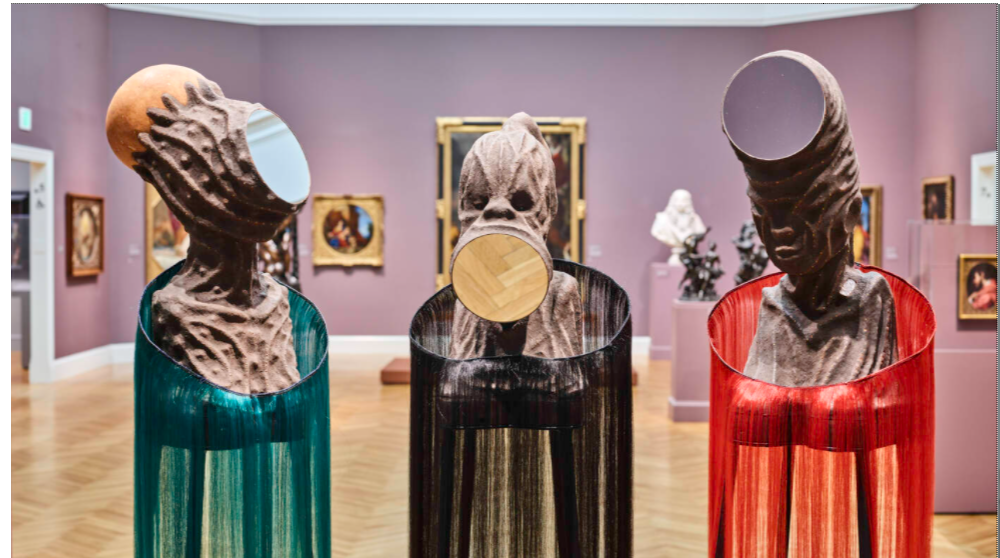Art World
‘I’ve Always Been a City Girl With a Nature Brain’: Watch Sculptor Wangechi Mutu Weave Worlds Together in Her Sculpture
As part of a collaboration with Art21, hear news-making artists describe their inspirations in their own words.

As part of a collaboration with Art21, hear news-making artists describe their inspirations in their own words.

Caroline Goldstein

In 2019, Kenyan-born artist Wangechi Mutu made history with the installation of her gleaming bronze sculptures flanking the Metropolitan Museum of Art’s facade, marking the first time since the building was completed in 1902 that freestanding artworks occupied the space.
The NewOnes, will free Us (2019), as the work was called, were caryatids—traditionally female sculptures meant to provide metaphorical and physical support. But in Mutu’s reimagining, instead of passively supporting they are liberated from their historic place of servitude, presented as individuals of strength and beauty, bringing in a perspective of feminist autonomy.
The artist’s two-decade career has been one of exploration and innovation. Mutu’s body of work ranges from fluid watercolor collages to sculpture, capturing her experience and respect for the natural world while infusing themes of the supernatural and mythological.
In an exclusive interview with Art21 as part of its Extended Play series, Mutu is filmed in her Nairobi studio, where an array of works of varying media are in progress. In the video, the artist describes her childhood in Kenya, where she attended an all-girls Catholic school that exuded “all kinds of feminine energy.” Mutu muses about the contradictions in her education, since during the 1970s and ’80s, the students learned British and European history, but not the history or literature of Africa, since so much of the Kenyan population was Christianized.

Wangechi Mutu, Mirror Faced I; Mirror Faced II; Mirror Faced III all (2020). © Wangechi Mutu, courtesy the artist and Gladstone Gallery.
That gap in her education sparked the artist’s interest in other contradictions within various cultures. One of the most obvious and disconcerting to the artist, was how “we worship the image of the woman but denigrate the actual human being of woman,” a fact which she says is “obviously something that has plagued us for a long time.” Other tensions she found through photography, which she describes as an invaluable tool for her work, often providing the backdrop for her dense collages and paintings.
Mutu began exploring how photography and colonization have grown in tandem. “The ‘other’ was photographed, and packaged, and consumed,” Mutu says. “Seeing yourself represented that way impacted you as a colonized ‘other,’ and how your image essentially became who you were.”
Right now at the Legion of Honor Museum in San Francisco, Mutu’s collages, paintings, and sculptural human-animal forms are installed within the classical architecture and Western art of the museum, challenging its dominant atmosphere. “When there is a singular voice or story,” Mutu explains, “it tends to be domineering, problematic, and often fictional.”
Watch the video, which originally appeared as part of Art21’s Extended Play series, below. “Wangechi Mutu: I Am Speaking, Are You Listening?” is on view at the Legion of Honor Museum through November 7, 2021.
This is an installment of “Art on Video,” a collaboration between Artnet News and Art21 that brings you clips of newsmaking artists. A new series of the nonprofit Art21’s flagship series Art in the Twenty-First Century is available now on PBS. Catch all episodes of other series like New York Close Up and Extended Play and learn about the organization’s educational programs at Art21.org